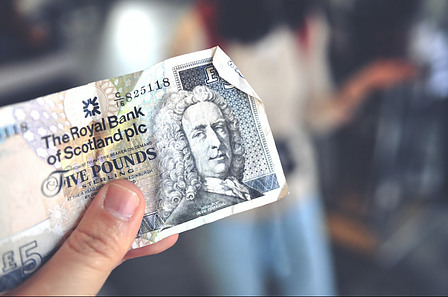
You have heard of Financial Independence Retire Early, FIRE but have always wondered how it works. Every now and then you come across articles that talk about how more and more millennials have retired early. I have the same thought as well and have always felt that this is something that I want to work on. Now that I understand how it works, let me share it with you. Interested to understand more?
What is Financial Independence Retire Early?
Financial Independence, Retire Early (FIRE) is a movement of people devoted to a program of extreme savings and investment that aims to allow them to retire far earlier than traditional budgets and retirement plans would permit. The following are the key principles of the FIRE movement:
- Frugality and Extreme Savings: FIRE followers aim to save up to 70% of their annual income by drastically reducing their expenses and looking for ways to increase their income.
- Investment: Wise investment is a key component in achieving a FIRE retirement. FIRE followers invest the money they save in a mix of tax-advantaged accounts as well as regular brokerage accounts.
- Withdrawals: Typically, FIRE followers withdraw 3% to 4% of their savings annually to cover living expenses in retirement.
- Detailed Planning and Economic Discipline: Detailed planning and economic discipline are essential to achieving a FIRE retirement.

So, what are some of the common strategies to achieve this?
You know what the principles are, then what can you do to achieve this? Some of the common strategies for achieving financial independence and retiring early:
- Establish the Proper Mindset: To achieve financial independence and retire early, you need to have the right mindset. This means being committed to saving and investing aggressively, living frugally, and planning carefully.
- Create a Budget and Calculate Your FIRE Number: Creating a budget is essential to achieving financial independence and retiring early. You need to know how much money you’re spending and where you can cut back. You also need to calculate your FIRE number, which is the amount of money you need to save to retire early.
- Invest Aggressively: Investing is a key component of achieving financial independence and retiring early. You need to invest your money in a mix of tax-advantaged accounts as well as regular brokerage accounts. Take time to research and determine what you want to invest in (a business, the stock market, real estate, etc.), and then take all that money that you’re making and invest it as soon as you can.
- Cut Expenses: To achieve financial independence and retire early, you need to cut your expenses as much as possible. This means living frugally, avoiding debt, and finding ways to increase your income.
- Eliminate Debt: Carrying excessive consumer debt is one of the biggest obstacles to retirement for many people. Strive to eliminate your nonmortgage debt as soon as possible, starting with high-interest credit cards. Many FIRE devotees also put extra money toward their mortgage principal each month in an effort to be mortgage-free by the time they retire, thus eliminating their largest monthly expense.
- Create an Incremental FIRE Plan: Creating an incremental FIRE plan involves setting short-term and long-term goals for saving and investing. This helps you stay on track and motivated as you work toward achieving financial independence and retiring early.
- Be Flexible: Achieving financial independence and retiring early requires flexibility. You need to be willing to adjust your plans as your circumstances change. This means being open to new opportunities, finding ways to increase your income, and being willing to make sacrifices along the way.

How do I calculate my FIRE number then?
Calculating your FIRE number is a crucial step in achieving financial independence and retiring early. Here are some ways to calculate your FIRE number:
- The 4% Rule: The most popular way to calculate your FIRE number is the 4% rule. This means you can withdraw 4% from your portfolio every year, and your money should last forever. To calculate your FIRE number using the 4% rule, simply calculate your annual expenses and multiply the number by 25.
- FIRE Calculators: There are many online FIRE calculators that can help you determine your FIRE number. These calculators take into account your current savings, expected investment returns, and other factors to give you a more accurate estimate of your FIRE number.
- Alternative Formula: An alternative formula to the 4% rule is FIRE number = annual expenses / safe withdrawal rate. This formula takes into account your expected safe withdrawal rate, which may be different from the 4% rule. To use this formula, simply calculate your annual expenses and divide the number by your expected safe withdrawal rate.
- The Rule of 25: Many FIRE followers also go by the rule of 25, saving 25 times your annual expenses to retire. To use this rule, first, multiply your monthly expenses by 12 to get your annual expenses. Then, multiply that annual expense by 25 to get your FIRE number, or the amount you’ll need to retire.
It’s worth noting that your FIRE number can change depending on different factors, such as your expected retirement age, investment returns, and life expectancy. So, it’s important to recalculate your FIRE number periodically to ensure you’re on track to achieving your financial goals.
Interesting! How do I then adjust my FIRE number based on expected retirement age and life expectancy?
To adjust your FIRE number based on expected retirement age and life expectancy, you need to consider the following factors:
- Expected Retirement Age: If you plan to retire earlier than the traditional retirement age of 65, you will need to save more money to cover a longer retirement. This means your FIRE number will be higher than someone who plans to retire later.
- Life Expectancy: If you expect to live longer than the average life expectancy, you will need to save more money to cover a longer retirement. This means your FIRE number will be higher than someone who expects to live a shorter life1.
To calculate your adjusted FIRE number based on expected retirement age and life expectancy, you can use the following formula:
Adjusted FIRE Number = (Annual Expenses x Years in Retirement) / Safe Withdrawal Rate
For example, if your annual expenses are $50,000, you plan to retire at age 50, and you expect to live until age 90, your adjusted FIRE number would be:
Adjusted FIRE Number = ($50,000 x 40) / 4% = $500,000
In this example, you would need to save $500,000 to retire at age 50 and have enough money to last until age 90, assuming a 4% safe withdrawal rate.
Conclusion
To retire early, you need to save and invest aggressively, live frugally, and plan carefully. The goal of FIRE is to achieve financial freedom so investors can choose how to spend their time. The benefits of FIRE come mostly from the financial independence component, though retiring early can be a nice benefit as well. If you’re interested in early retirement, you should think about how much money you plan to save and invest annually to reach your goal.
It’s also important to recalculate your FIRE number periodically to ensure you’re on track to achieving your financial goals. Adjusting your FIRE number based on expected retirement age and life expectancy can help you stay on track and ensure you have enough money to cover your expenses in retirement.